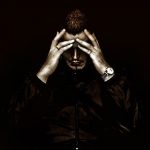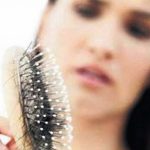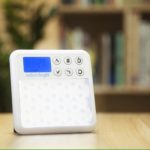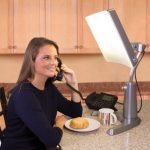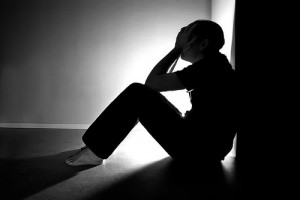
Everyone has their moments where they feel sad and low, sometimes even depressed. These feelings can stem from rejection, loss, drastic lifestyle changes, low self esteem, every day struggles, and more. But when these feelings don’t subside, when your mood stays as low as the dirt below you, it is very likely that your sadness has transformed into something deeper. These are signs of being clinically depressed. When depressed, most people feel helpless, hopeless, and worthless. There are little to no things that can lift people’s chins in scenarios such as this. These feelings can last from a few days, to months, to years. A great deal of people battle depression for their entire lives. When sadness turns into depression, it becomes a condition that is medically treatable.
How Do I Know If I Am Depressed?
Web MD, a very reliable website dedicated to helping people understand their bodies, has a section on their website explaining depression and all of the details surrounding the condition. In their piece on depression, there is a chapter titled, “How Do I Know If I Have Depression?” They continue to list signs that point towards depression followed by some important key signs…
• A depressed mood during most of the day, particularly in the morning
• Fatigue or loss of energy almost every day
• Feelings of worthlessness or guilt almost every day
• Impaired concentration, indecisiveness
• Insomnia (an inability to sleep) or hypersomnia (excessive sleeping) almost every day
• Markedly diminished interest or pleasure in almost all activities nearly every day
• Recurring thoughts of death or suicide (not just fearing death)
• A sense of restlessness or being slowed down
• Significant weight loss or weight gain
“A key sign of depression is either depressed mood or loss of interest in activities you once enjoyed. For a diagnosis of depression, these signs should be present most of the day either daily or nearly daily for at least two weeks. In addition, the depressive symptoms need to cause clinically significant distress or impairment. They cannot be due to the direct effects of a substance, for example, a drug or medication. Nor can they be the result of a medical condition such as hypothyroidism.” (WebMD.com)
Is Depression Common?
It is important to note that depression is extremely common. In fact, it’s even more than extremely common. It is estimated that by 2020, clinical depression will be the second most cause of disability in the world. Heart Disease is the first. Although most forms of depression are clinically treatable, a great deal of people who suffer from depression fail to acknowledge that there is a valid explanation to their low and depressed moods. Some people know, but fail to accept that depression is the case. Because of this, many people search tirelessly for other causes and explanations.
Light Therapy & Depression…
Light Therapy is the process of using different forms of light to help reduce and/or treat a wide array of conditions and disorders. Doctors have been using light therapy on patients suffering from depression for awhile. And now, thanks to the convenience of new light therapy products, you can also use the treatment at home. Light therapy has been tackling depression slowly but surely.
Light Therapy is usually discussed in terms of Seasonal Affective Disorder, which is a mild form of depression that typically occurs in the winter months. But major depression is also a condition that is being looked at under the light. A recent study has shown that fluorescent lighting is being used to treat major (non-seasonal) depression. In fact, the treatment might actually be better than anti-depressants.
Where’s The Proof?
JAMA Psychiatry arranged a randomized clinical trial to study Light Therapy and depression. The team at JAMA assigned 122 people struggling with major depression to one of many treatment groups. One group was given fluorescent light therapy from a simple light box. The treatment was 30 minutes of light and a placebo pill right after they awoke from a nights sleep. The second group took Prozac, and were exposed to the sound of a negative ion generator. It was deactivated and produced a hum. No ions. The third group received both treatments together. The control group was given both of the placebo treatments.
Forbes writer, Alice G. Walton, who is a contributor to the website’s Pharmacy and Healthcare section, studied the clinic that was conducted by JAMA. She took to the Forbes blog to describe how the trial went, in terms that are a bit easier for us non-scientists to understand. She wrote on the blog,
“At the end of the study period, 59% of the people who had both active treatments – light therapy and medication together – achieved remission from their depression. And light therapy alone wasn’t too far behind: about 44% of the participants who’d received active light therapy (along with the placebo pill) experienced remission. In contrast, only 19% of those taking the antidepressant and receiving the placebo light therapy achieved remission. And 30% of people receiving both placebos did.
When it came to how many people experienced a reduction in their symptoms by 50%, a similar breakdown was observed. About 76% of the people who received both light therapy and antidepressant had this level of symptom reduction. For those who received only light therapy, about half of this group saw reduction in their symptoms, and for those who took the antidepressant alone, 29% did. For those getting the placebo pill and placebo light therapy, 33% saw the same level of reduction in their symptoms.
This isn’t the first study to suggest that medication isn’t any better than placebo — but it is the first to suggest that light therapy may be better than either one for treating major depression.” (Forbes.com)
A Game Changer…
